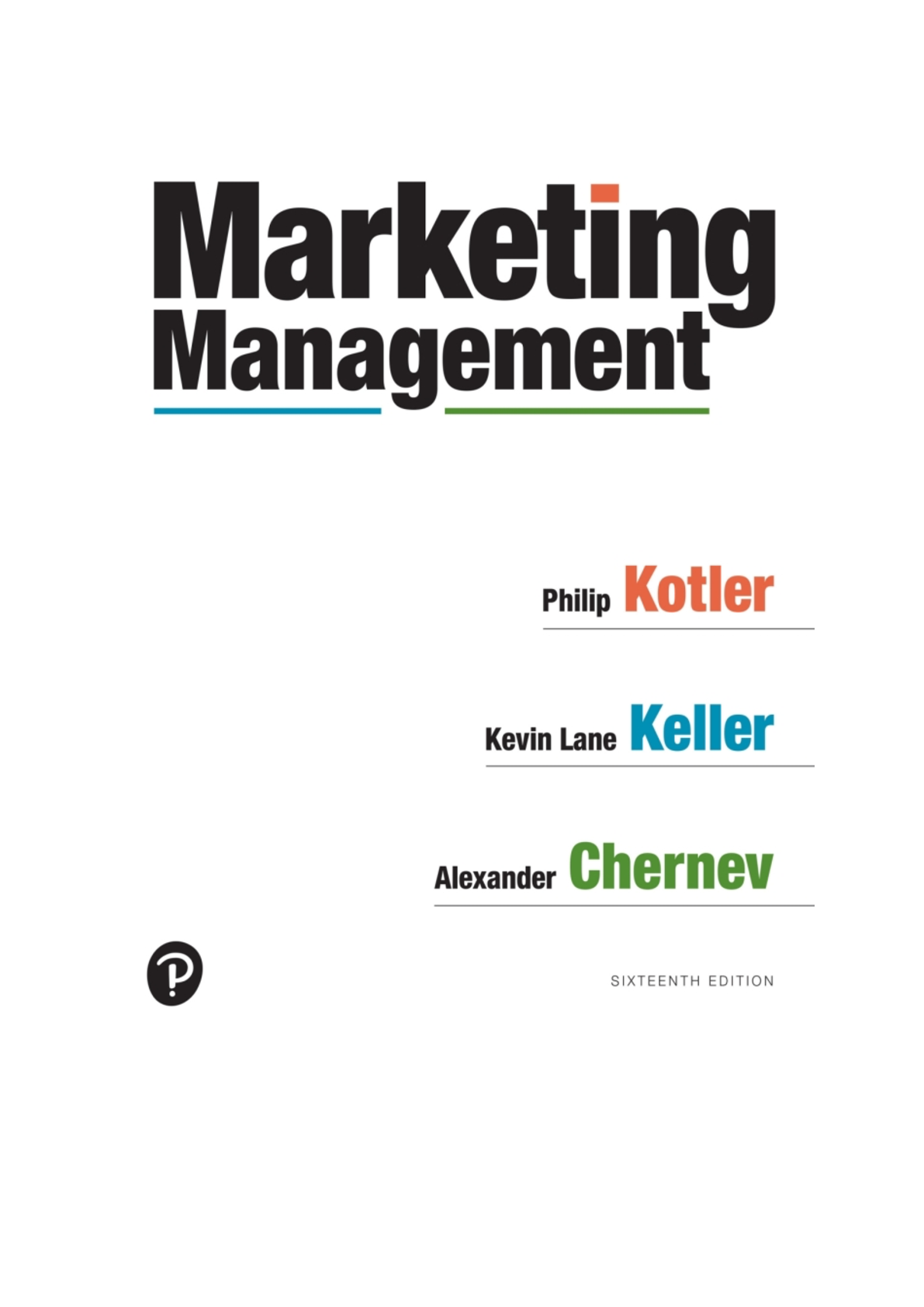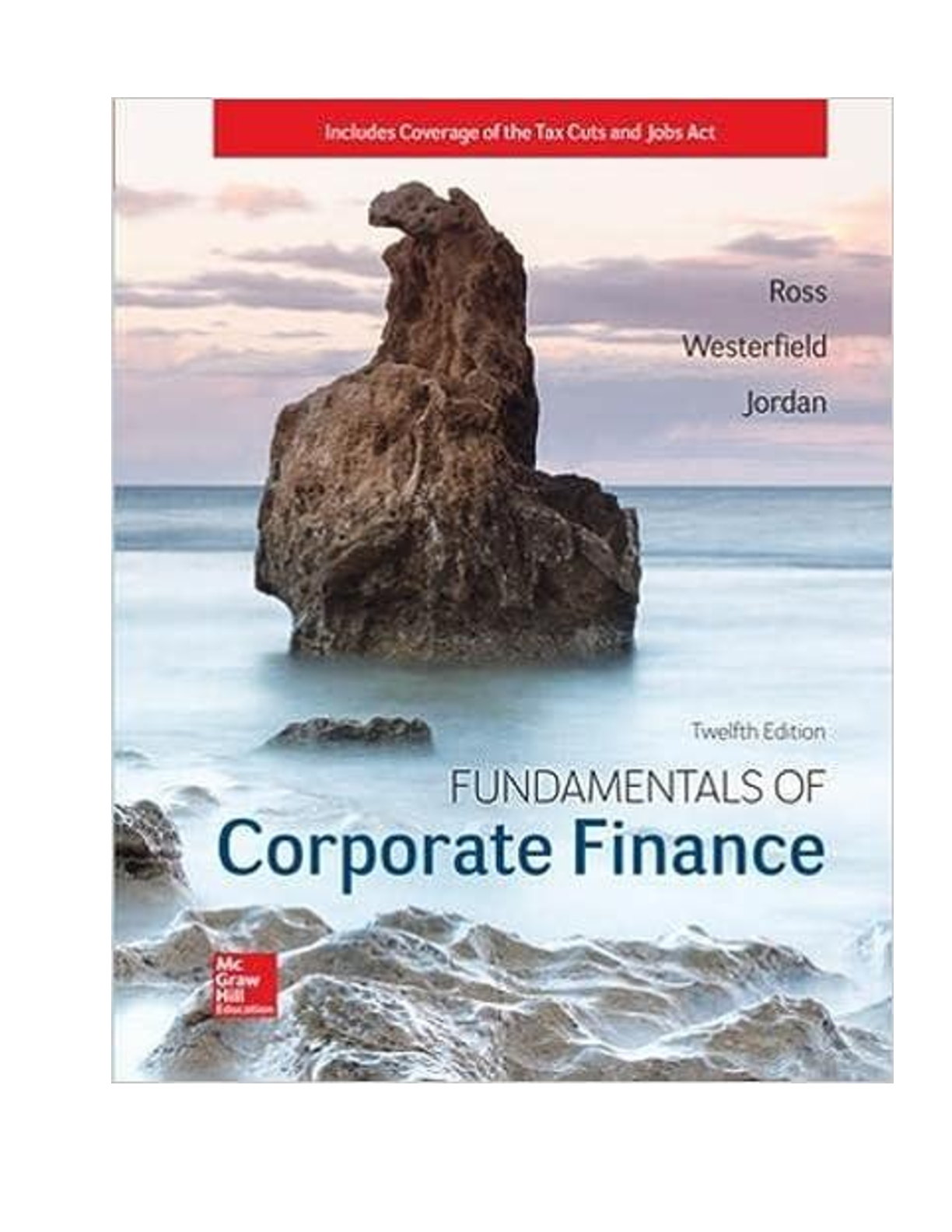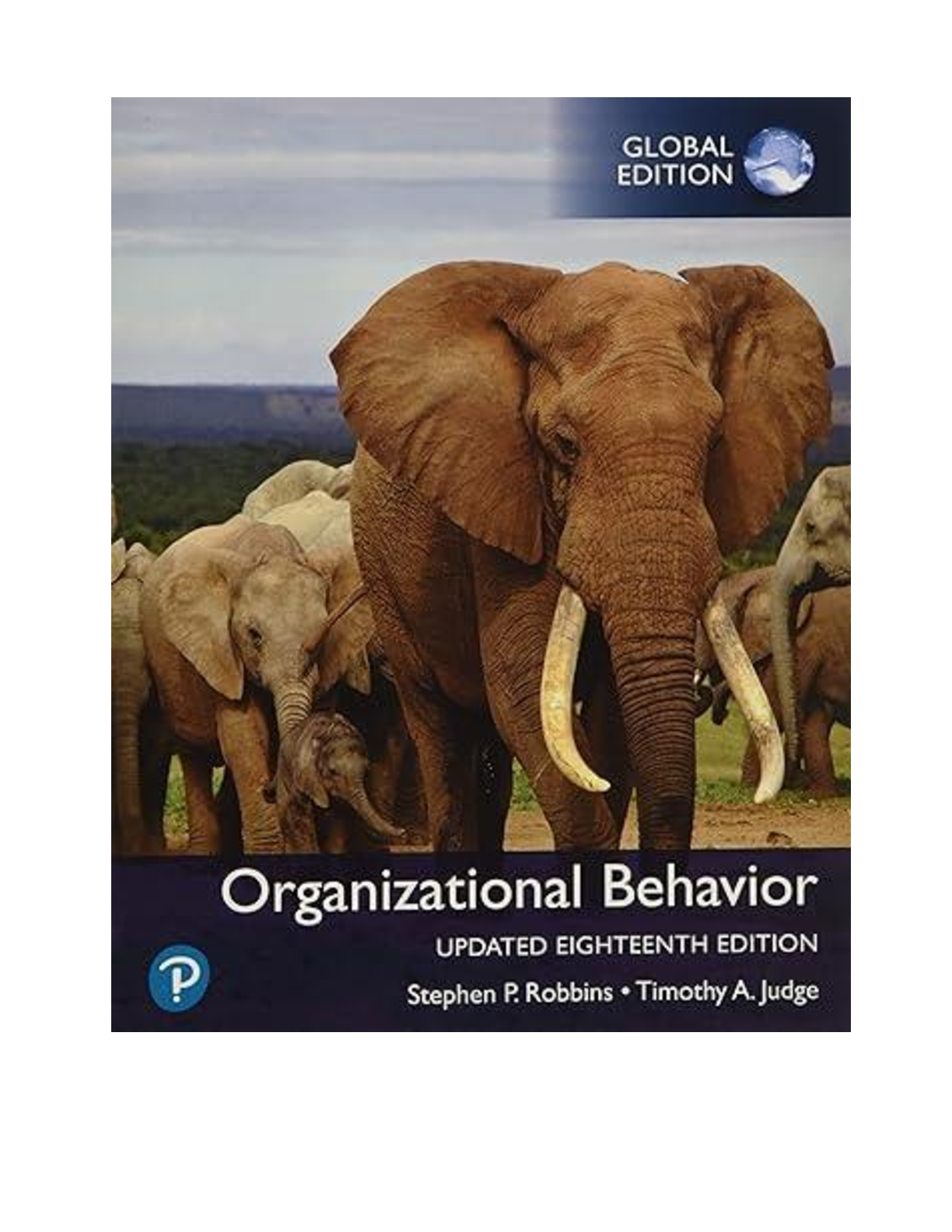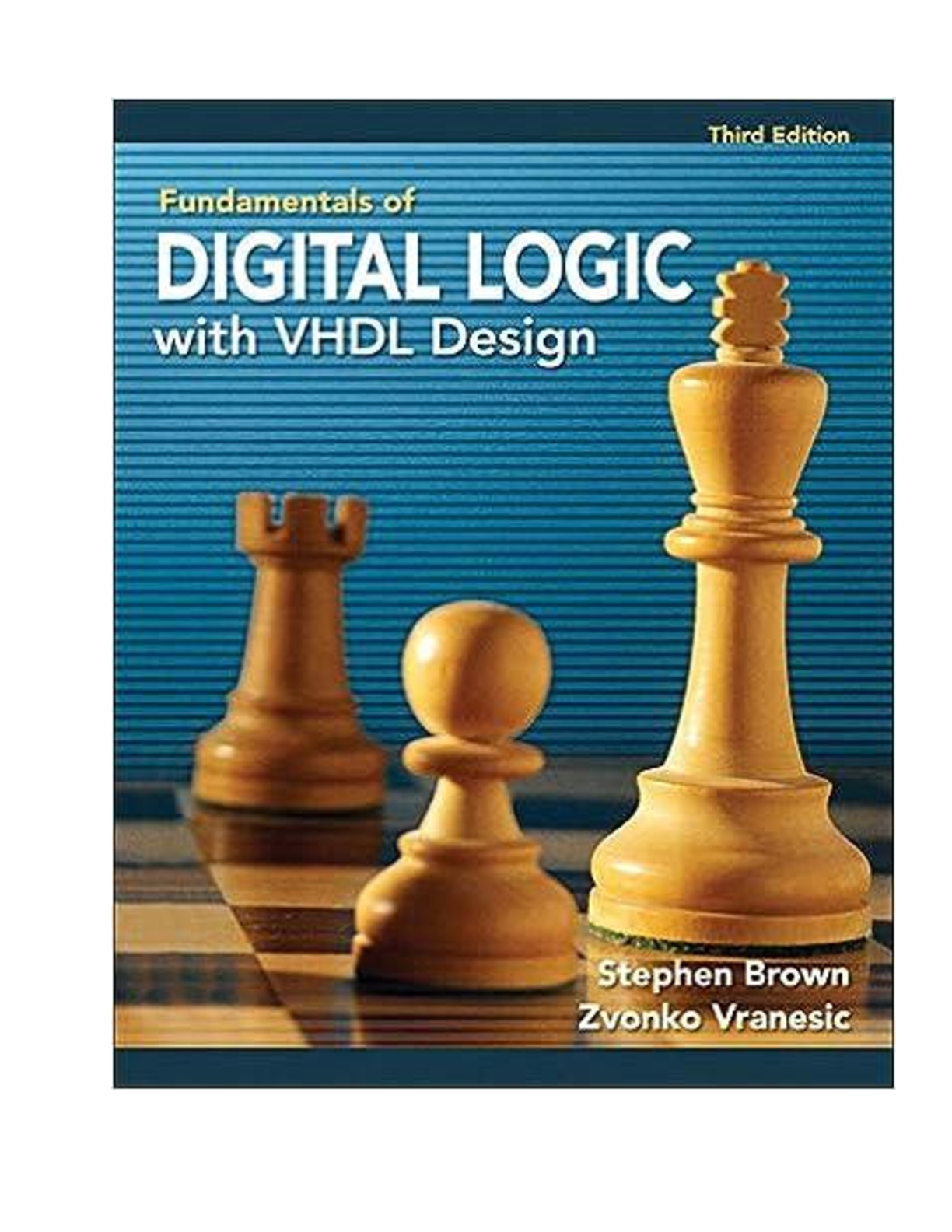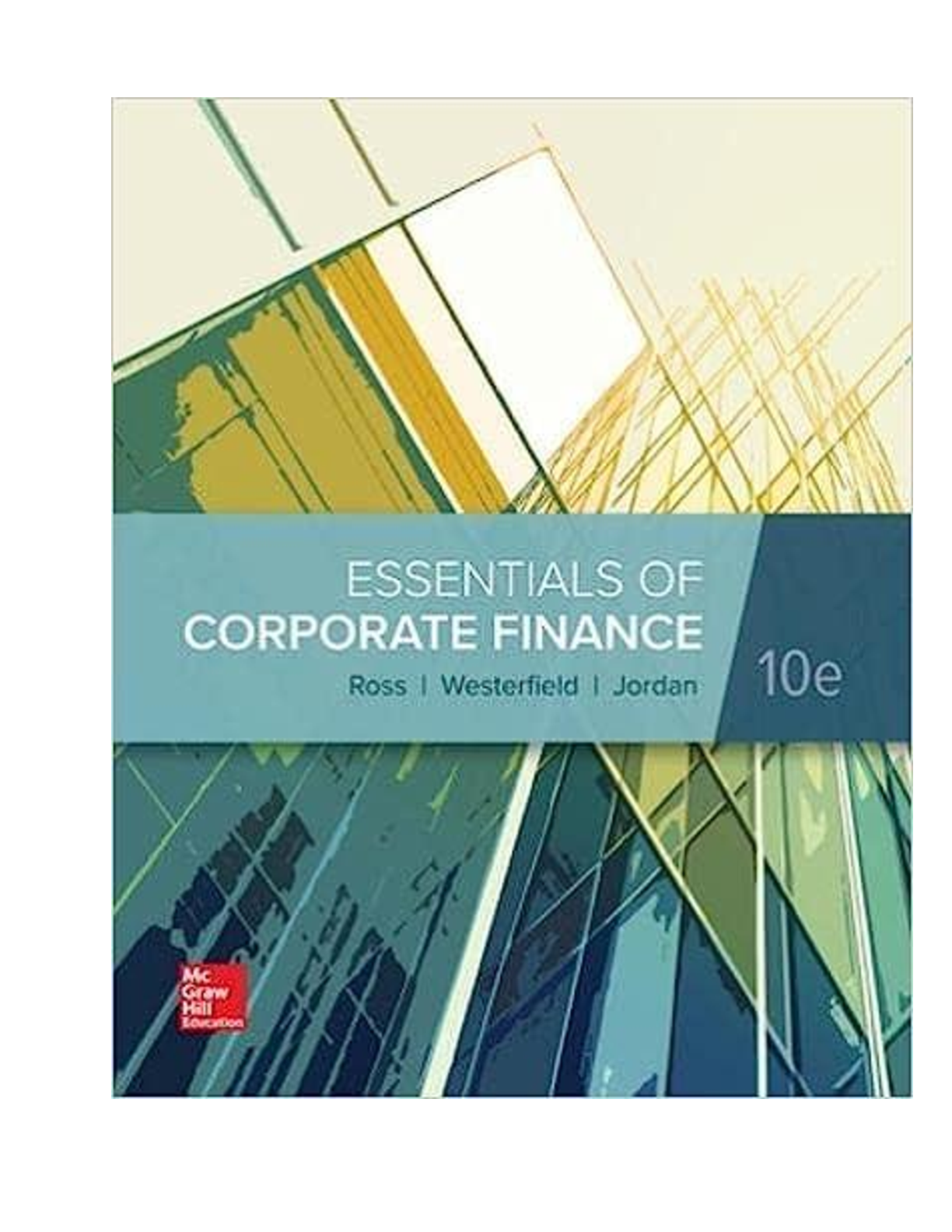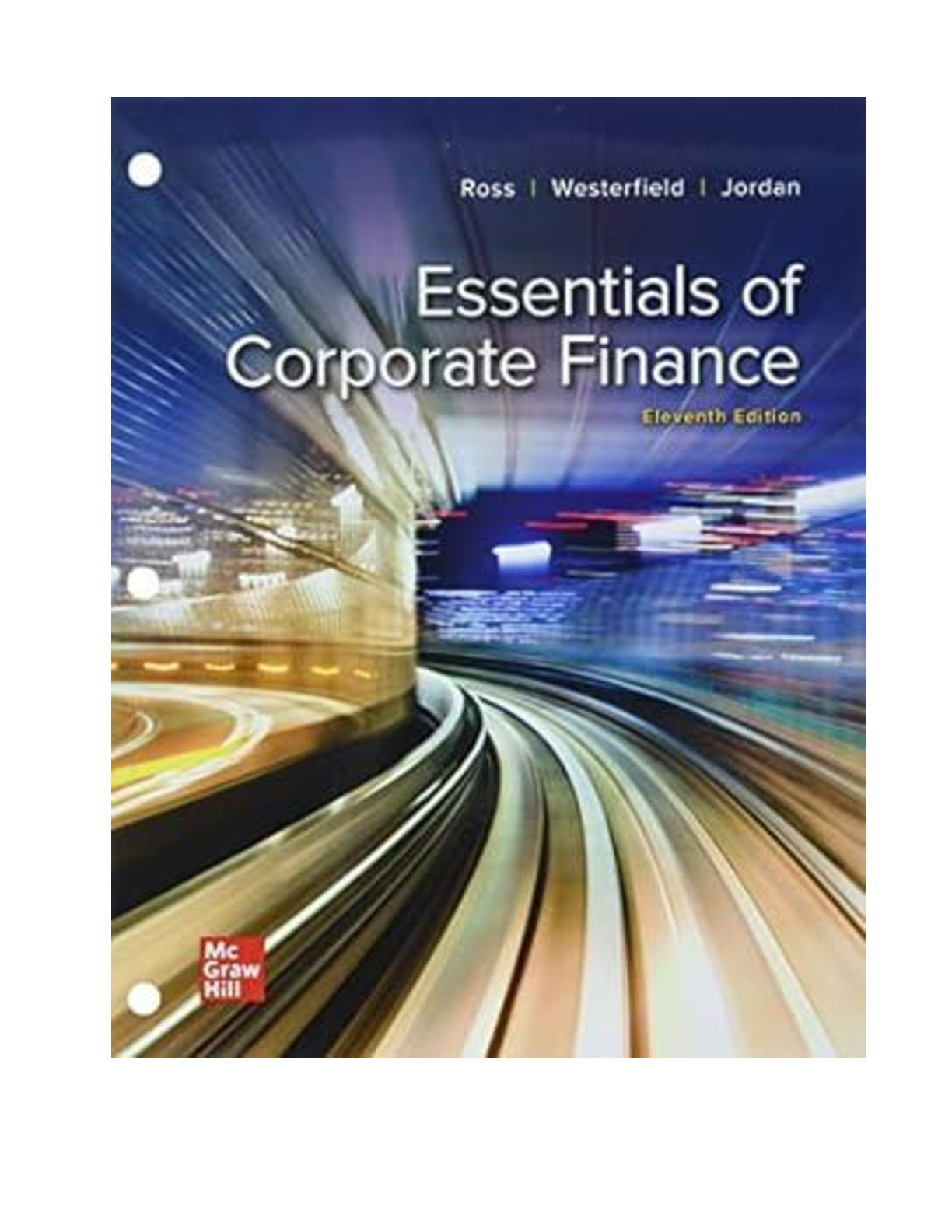[EBOOK] [PDF] Corporate Finance 13th Edition by Stephen Ross
Document Content and Description Below
PDF Ebook Textbook for Corporate Finance 13e 13th Edition by Stephen Ross, Randolph Westerfield and Jeffrey Jaffe and Bradford Jordan. ISBN-13: 9781260772388 Full Chapters PDF Included with Instant... Download - Feel free to download Chapter 1: Introduction to Corporate Finance 1.1 What Is Corporate Finance? The Balance Sheet Model of the firm The Financial Manager 1.2 The Corporate Firm The Sole Proprietorship The Partnership The Corporation A Corporation by Another Name . . . 1.3 The Importance of Cash Flows Identification of Cash Flows Timing of Cash Flows Risk of Cash Flows 1.4 The Goal of Financial Management Possible Goals The Goal of the Financial Manager A More General Goal 1.5 The Agency Problem and Control of the Corporation Agency Relationships Management Goals Do Managers Act in the Stockholders’ Interests? Stakeholders 1.6 Regulation The Securities Act of 1933 and the Securities Exchange Act of 1934 Sarbanes-Oxley Summary and Conclusions Concept Questions Chapter 2: Financial Statements and Cash Flow 2.1 The Balance Sheet Liquidity Debt versus Equity Value versus Cost 2.2 The Income Statement Generally Accepted Accounting Principles Noncash Items Time and Costs 2.3 Taxes Corporate and Personal Tax Rates Average versus Marginal Tax Rates 2.4 Net Working Capital 2.5 Cash Flow of the Firm 2.6 The Accounting Statement of Cash Flows Cash Flow from Operating Activities Cash Flow from Investing Activities Cash Flow from Financing Activities 2.7 Cash Flow Management Summary and Conclusions Concept Questions Questions and Problems Excel Master It! Problem Mini Case: Cash Flows at Warf Computers, Inc. Chapter 3: Financial Statements Analysis and Financial Models 3.1 Financial Statements Analysis Standardizing Statements Common-Size Balance Sheets Common-Size Income Statements 3.2 Ratio Analysis Short-Term Solvency or Liquidity Measures Long-Term Solvency Measures Asset Management or Turnover Measures Profitability Measures Market Value Measures 3.3 The DuPont Identity A Closer Look at ROE Problems with Financial Statement Analysis 3.4 Financial Models A Simple Financial Planning Model The Percentage of Sales Approach 3.5 External Financing and Growth The Relationship between EFN and Growth Financial Policy and Growth A Note about Sustainable Growth Rate Calculations 3.6 Some Caveats Regarding Financial Planning Models Summary and Conclusions Concept Questions Questions and Problems Excel Master It! Problem Mini Case: Ratios and Financial Planning at East Coast Yachts PART II Valuation and Capital Budgeting Chapter 4: Discounted Cash Flow Valuation 4.1 Valuation: The One-Period Case 4.2 The Multiperiod Case Future Value and Compounding The Power of Compounding: A Digression Present Value and Discounting Finding the Number of Periods The Algebraic Formula 4.3 Compounding Periods Distinction between Annual Percentage Rate and Effective Annual Rate Compounding over Many Years Continuous Compounding 4.4 Simplifications Perpetuity Growing Perpetuity Annuity Growing Annuity 4.5 Loan Amortization 4.6 What Is a Firm Worth? Summary and Conclusions Concept Questions Questions and Problems Excel Master It! Problem Mini Case: The MBA Decision Appendix 4A: Net Present Value: First Principles of Finance Appendix 4B: Using Financial Calculators Chapter 5: Net Present Value and Other Investment Rules 5.1 Why Use Net Present Value? 5.2 The Payback Period Method Defining the Rule Problems with the Payback Method Managerial Perspective Summary of Payback 5.3 The Discounted Payback Period Method 5.4 The Internal Rate of Return 5.5 Problems with the IRR Approach Definition of Independent and Mutually Exclusive Projects Two General Problems Affecting both Independent and Mutually Exclusive Projects The Modified Internal Rate of Return (MIRR) Problems Specific to Mutually Exclusive Projects Redeeming Qualities of IRR A Test 5.6 The Profitability Index Calculation of Profitability Index 5.7 The Practice of Capital Budgeting Summary and Conclusions Concept Questions Questions and Problems Excel Master It! Problem Mini Case: Bullock Gold Mining Chapter 6: Making Capital Investment Decisions 6.1 Incremental Cash Flows: The Key to Capital Budgeting Cash Flows—Not Accounting Income Sunk Costs Opportunity Costs Side Effects Allocated Costs 6.2 The Baldwin Company: An Example An Analysis of the Project Which Set of Books? A Note about Net Working Capital A Note about Depreciation Financing Costs 6.3 Alternative Definitions of Operating Cash Flow The Top-Down Approach The Bottom-Up Approach The Tax Shield Approach Conclusion 6.4 Some Special Cases of Discounted Cash Flow Analysis Evaluating Cost-Cutting Proposals Setting the Bid Price Investments of Unequal Lives: The Equivalent Annual Cost Method 6.5 Inflation and Capital Budgeting Interest Rates and Inflation Cash Flow and Inflation Discounting: Nominal or Real? Summary and Conclusions Concept Questions Questions and Problems Excel Master It! Problems Mini Cases: Bethesda Mining Company 203 Goodweek Tires, Inc. Chapter 7: Risk Analysis, Real Options, and Capital Budgeting 7.1 Sensitivity Analysis, Scenario Analysis, and Break –Even Analysis Sensitivity Analysis and Scenario Analysis Break-Even Analysis 7.2 Monte Carlo Simulation Step 1: Specify the Basic Model Step 2: Specify a Distribution for Each Variable in the Model Step 3: The Computer Draws One Outcome Step 4: Repeat the Procedure Step 5: Calculate NPV 7.3 Real Options The Option to Expand The Option to Abandon Timing Options 7.4 Decision Trees Summary and Conclusions Concept Questions Questions and Problems Excel Master It! Problem Mini Case: Bunyan Lumber, LLC Chapter 8: Interest Rates and Bond Valuation 8.1 Bonds and Bond Valuation Bond Features and Prices Bond Values and Yields Interest Rate Risk Finding the Yield to Maturity: More Trial and Error Zero Coupon Bonds 8.2 Government and Corporate Bonds Government Bonds Corporate Bonds Bond Ratings 8.3 Bond Markets How Bonds Are Bought and Sold Bond Price Reporting A Note on Bond Price Quotes 8.4 Inflation and Interest Rates Real versus Nominal Rates Inflation Risk and Inflation-Linked Bonds The Fisher Effect 8.5 Determinants of Bond Yields The Term Structure of Interest Rates Bond Yields and the Yield Curve: Putting It All Together Conclusion Summary and Conclusions Concept Questions Questions and Problems Excel Master It! Problem Mini Case: Financing East Coast Yachts’ Expansion Plans with a Bond Issue Chapter 9: Stock Valuation 9.1 The Present Value of Common Stocks Dividends versus Capital Gains Valuation of Different Types of Stocks 9.2 Estimates of Parameters in the Dividend Discount Model Where Does g Come From? Where Does R Come From? A Healthy Sense of Skepticism Dividends or Earnings: Which to Discount? The No-Dividend Firm 9.3 Comparables Price-Earnings Ratio Enterprise Value Ratios 9.4 Valuing Stocks Using Free Cash Flows 9.5 The Stock Markets Dealers and Brokers Organization of the NYSE Types of Orders Nasdaq Operations Stock Market Reporting Summary and Conclusions Concept Questions Questions and Problems Excel Master It! Problem Mini Case: Stock Valuation at Ragan Engines PART III Risk Chapter 10: Lessons from Market History 10.1 Returns Dollar Returns Percentage Returns 10.2 Holding Period Returns 10.3 Return Statistics 10.4 Average Stock Returns and Risk-Free Returns 10.5 Risk Statistics Variance Normal Distribution and Its Implications for Standard Deviation 10.6 More on Average Returns Arithmetic versus Geometric Averages Calculating Geometric Average Returns Arithmetic Average Return or Geometric Average Return? 10.7 The U.S. Equity Risk Premium: Historical and International Perspectives 10.8 2008: A Year of Financial Crisis Summary and Conclusions Concept Questions Questions and Problems Excel Master It! Problem Mini Case: A Job at East Coast Yachts Chapter 11: Return, Risk, and the Capital Asset Pricing Model 11.1 Individual Securities 11.2 Expected Return, Variance, and Covariance Expected Return and Variance Covariance and Correlation 11.3 The Return and Risk for Portfolios The Expected Return on a Portfolio Variance and Standard Deviation of a Portfolio 11.4 The Efficient Set for Two Assets 11.5 The Efficient Set for Many Securities Variance and Standard Deviation in a Portfolio of Many Assets 11.6 Diversification The Anticipated and Unanticipated Components of News Risk: Systematic and Unsystematic The Essence of Diversification The Effect of Diversification: Another Lesson from Market History 11.7 Riskless Borrowing and Lending The Optimal Portfolio 11.8 Market Equilibrium Definition of the Market Equilibrium Portfolio Definition of Risk When Investors Hold the Market Portfolio The Formula for Beta A Test 11.9 Relationship between Risk and Expected Return (CAPM) Expected Return on the Market Expected Return on an Individual Security Summary and Conclusions Concept Questions Questions and Problems Excel Master It! Problem Mini Case: A Job at East Coast Yachts, Part 2 Appendix 11A: Is Beta Dead? Chapter 12: An Alternative View of Risk and Return 12.1 Systematic Risk and Betas 12.2 Portfolios and Factor Models Portfolios and Diversification 12.3 Betas, Arbitrage, and Expected Returns The Linear Relationship The Market Portfolio and the Single Factor 12.4 The Capital Asset Pricing Model and the Arbitrage Pricing Theory Differences in Pedagogy Differences in Application 12.5 Empirical Approaches to Asset Pricing Empirical Models Style Portfolios Summary and Conclusions Concept Questions Questions and Problems Excel Master It! Problem Mini Case: The Fama-French Multifactor Model and Mutual Fund Returns Chapter 13: Risk, Cost of Capital, and Valuation 13.1 The Cost of Capital 13.2 Estimating the Cost of Equity Capital with the CAPM The Risk-Free Rate Market Risk Premium 13.3 Estimation of Beta Real-World Betas Stability of Beta 13.4 Determinants of Beta Cyclicality of Revenues Operating Leverage Financial Leverage and Beta Beta in a World with Taxes 13.5 The Dividend Discount Model Approach Comparison pf DDM and CAPM 13.6 Cost of Capital for Projects The Comparables Method Using Industry Comparables 13.7 Cost of Fixed Income Securities Cost of Debt Cost of Preferred Stock 13.8 The Weighted Average Cost of Capital Cost of Levered Equity Financing with a Mix of Debt and Equity Applying the WACC 13.9 Valuation with WACC Valuing a Finite-Horizon Project Terminal Value and the WACC 13.10 Estimating Eastman Chemical’s Cost of Capital 13.11 Flotation Costs and the Weighted Average Cost of Capital The Basic Approach Flotation Costs and NPV Internal Equity and Flotation Costs Summary and Conclusions Concept Questions Questions and Problems Excel Master It! Problem Mini Case: Cost of Capital for Master Tools Appendix 13A: Economic Value Added and the Measurement of Financial Performance PART IV Capital Structure and Dividend Policy Chapter 14: Efficient Capital Markets and Behavioral Challenges 14.1 Can Financing Decisions Create Value? 14.2 A Description of Efficient Capital Markets Foundations of Market Efficiency 14.3 The Different Types of Efficiency The Weak Form The Semistrong and Strong Forms Some Common Misconceptions about the Efficient Market Hypothesis 14.4 The Evidence The Weak Form The Semistrong Form The Strong Form 14.5 The Behavioral Challenge to Market Efficiency Rationality Independent Deviations from Rationality Arbitrage 14.6 Empirical Challenges to Market Efficiency 14.7 Reviewing the Differences 14.8 Implications for Corporate Finance 1. Accounting Choices, Financial Choices, and Market Efficiency 2. The Timing Decision 3. Speculation and Efficient Markets 4. Information in Market Prices Summary and Conclusions Concept Questions Questions and Problems Mini Case: Your 401(K) Account at East Coast Yachts Chapter 15: Long-Term Financing 15.1 Some Features of Common and Preferred Stocks Common Stock Features Preferred Stock Features 15.2 Corporate Long-Term Debt Is it Debt or Equity? Long-Term Debt: The Basics The Indenture 15.3 Some Different Types of Bonds Floating-Rate Bonds Other Types of Bonds 15.4 Bank Loans 15.5 International Bonds 15.6 Patterns of Financing 15.7 Recent Trends in Capital Structure Which Are Best: Book or Market Values? Summary and Conclusions Concept Questions Questions and Problems Chapter 16: Capital Structure: Basic Concepts 16.1 The Capital Structure Question and the Pie Theory 16.2 Maximizing Firm Value versus Maximizing Stockholder Interests 16.3 Financial Leverage and Firm Value: An Example Leverage and Returns to Shareholders The Choice between Debt and Equity A Key Assumption 16.4 Modigliani and Miller: Proposition II (No Taxes) Risk to Equityholders Rises with Leverage Proposition II: Required Return to Equityholders Rises with Leverage MM: An Interpretation 16.5 Taxes The Basic Insight Present Value of the Tax Shield Value of the Levered Firm Expected Return and Leverage under Corporate Taxes The Weighted Average Cost of Capital, WACC, and Corporate Taxes Stock Price and Leverage under Corporate Taxes Summary and Conclusions Concept Questions Questions and Problems Excel Master It! Problem Mini Case: Stephenson Real Estate Recapitalization Chapter 17: Capital Structure: Limits to the Use of Debt 17.1 Costs of Financial Distress Bankruptcy Risk or Bankruptcy Cost? 17.2 Description of Financial Distress Costs Direct Costs of Financial Distress: Legal and Administrative Costs of Liquidation or Reorganization Indirect Costs of Financial Distress Agency Costs 17.3 Can Costs of Debt Be Reduced? Protective Covenants Consolidation of Debt 17.4 Integration of Tax Effects and Financial Distress Costs PIE Again 17.5 Signaling 17.6 Shirking, Perquisites, and Bad Investments: A Note on Agency Cost of Equity Effect of Agency Costs of Equity on Debt-Equity Financing Free Cash Flow 17.7 The Pecking-Order Theory Rules of the Pecking Order Implications 17.8 Personal Taxes The Basics of Personal Taxes The Effect of Personal Taxes on Capital Structure 17.9 How Firms Establish Capital Structure Summary and Conclusions Concept Questions Questions and Problems Mini Case: McKenzie Corporation’s Capital Budgeting Appendix 17A: Some Useful Formulas of Financial Structure Appendix 17B: The Miller Model and the Graduated Income Tax Chapter 18: Valuation and Capital Budgeting for the Levered Firm 18.1 Adjusted Present Value Approach 18.2 Flow to Equity Approach Step 1: Calculating Levered Cash Flow (LCF) Step 2: Calculating RS Step 3: Valuation 18.3 Weighted Average Cost of Capital Method 18.4 A Comparison of the APV, FTE, and WACC Approaches A Suggested Guideline 18.5 Valuation When the Discount Rate Must Be Estimated 18.6 APV Example 18.7 Beta and Leverage The Project Is Not Scale Enhancing Summary and Conclusions Concept Questions Questions and Problems Mini Case: The Leveraged Buyout of Cheek Products, Inc. Appendix 18A: The Adjusted Present Value Approach to Valuing Leveraged Buyouts Chapter 19: Dividends and Other Payouts 19.1 Different Types of Payouts 19.2 Standard Method of Cash Dividend Payment 19.3 The Benchmark Case: An Illustration of the Irrelevance of Dividend Policy Current Policy: Dividends Set Equal to Cash Flow Alternative Policy: Initial Dividend Is Greater Than Cash Flow The Indifference Proposition Homemade Dividends A Test Dividends and Investment Policy 19.4 Repurchase of Stock Dividend versus Repurchase: Conceptual Example Dividends versus Repurchases: Real-World Considerations 19.5 Personal Taxes, Dividends, and Stock Repurchases Firms without Sufficient Cash To Pay a Dividend Firms with Sufficient Cash to Pay a Dividend Summary of Personal Taxes 19.6 Real-World Factors Favoring a High-Dividend Policy Desire for Current Income Behavioral Finance Agency Costs Information Content of Dividends and Dividend Signaling 19.7 The Clientele Effect: A Resolution of Real-World Factors? 19.8 What We Know and Do Not Know about Dividend Policy Corporate Dividends Are Substantial Fewer Companies Pay Dividends Corporations Smooth Dividends Some Survey Evidence about Dividends 19.9 Putting It All Together 19.10 Stock Dividends and Stock Splits Some Details about Stock Splits and Stock Dividends Value of Stock Splits and Stock Dividends Reverse Splits Summary and Conclusions Concept Questions Questions and Problems Mini Case: Electronic Timing, Inc. PART V Long‐Term Financing Chapter 20: Raising Capital 20.1 Entrepreneurship: Early-Stage Financing and Venture Capital Entreprenuership Venture Capital Stages of Financing Some Venture Capital Realities Venture Capital Firms Crowdfunding Initial Coin Offerings 20.2 The Public Issue Direct Listing Special-Purpose Acquisition Companies Dual-Class Stock IPOs 20.3 Alternative Issue Methods 20.4 The Cash Offer Investment Banks The Offering Price Underpricing: A Possible Explanation Evidence on Underpricing The Partial Adjustment Phenomenon 20.5 The Announcement of New Equity and the Value of the Firm 20.6 The Cost of New Issues The Costs of Going Public: A Case Study 20.7 Rights The Mechanics of a Rights Offering Subscription Price Number of Rights Needed to Purchase a Share Effect of Rights Offering on Price of Stock Effects on Shareholders The Underwriting Arrangements 20.8 The Rights Puzzle 20.9 Dilution Dilution of Percentage Ownership Dilution of Stock Price Dilution of Book Value Dilution of Earnings per Share Conclusion 20.10 Shelf Registration 20.11 Issuing Long-Term Debt Summary and Conclusions Concept Questions Questions and Problems Mini Case: East Coast Yachts Goes Public Chapter 21: Leasing 21.1 Types of Leases The Basics Operating Leases Financial Leases 21.2 Accounting and Leasing 21.3 Taxes, the IRS, and Leases 21.4 The Cash Flows of Leasing A Note about Taxes 21.5 A Detour for Discounting and Debt Capacity with Corporate Taxes Present Value of Riskless Cash Flows Optimal Debt Level and Riskless Cash Flows 21.6 NPV Analysis of the Lease-versus-Buy Decision The Discount Rate 21.7 Debt Displacement and Lease Valuation The Basic Concept of Debt Displacement Optimal Debt Level in the Xomox Example 21.8 Does Leasing Ever Pay? The Base Case 21.9 Reasons for Leasing Good Reasons for Leasing Bad Reasons for Leasing 21.10 Some Unanswered Questions Are the Uses of Leases and Debt Complementary? Why Are Leases Offered by both Manufacturers and Third-Party Lessors? Why Are Some Assets Leased More Than Others? Summary and Conclusions Concept Questions Questions and Problems Mini Case: The Decision to Lease or Buy at Warf Computers Appendix 21A: APV Approach to Leasing PART VI Options, Futures, and Corporate Finance Chapter 22: Options and Corporate Finance 22.1 Options 22.2 Call Options The Value of a Call Option at Expiration 22.3 Put Options The Value of a Put Option at Expiration 22.4 Selling Options 22.5 Option Quotes 22.6 Combinations of Options 22.7 Valuing Options Bounding the Value of a Call The Factors Determining Call Option Values A Quick Discussion of Factors Determining Put Option Values 22.8 An Option Pricing Formula A Two-State Option Model The Black-Scholes Model 22.9 Stocks and Bonds as Options The Firm Expressed in Terms of Call Options The Firm Expressed in Terms of Put Options A Resolution of the Two Views A Note about Loan Guarantees 22.10 Options and Corporate Decisions: Some Applications Mergers and Diversification Options and Capital Budgeting 22.11 Investment in Real Projects and Options Summary and Conclusions Concept Questions Questions and Problems Excel Master It! Problem Mini Case: Clissold Industries Options Chapter 23: Options and Corporate Finance: Extensions and Applications 23.1 Executive Stock Options Why Options? Valuing Executive Compensation 23.2 Valuing a Startup 23.3 More about the Binomial Model Heating Oil 23.4 Shutdown and Reopening Decisions Valuing a Gold Mine The Abandonment and Opening Decisions Valuing the Simple Gold Mine Summary and Conclusions Concept Questions Questions and Problems Mini Case: Exotic Cuisine’s Employee Stock Options Chapter 24: Warrants and Convertibles 24.1 Warrants 24.2 The Difference between Warrants and Call Options How the Firm Can Hurt Warrant Holders 24.3 Warrant Pricing and the Black-Scholes Model 24.4 Convertible Bonds 24.5 The Value of Convertible Bonds Straight Bond Value Conversion Value Option Value 24.6 Issuing Warrants and Convertibles in Efficient Markets Convertible Debt versus Straight Debt Convertible Debt versus Common Stock The “Free Lunch” Story The “Expensive Lunch” Story A Reconciliation 24.7 Why Are Warrants and Convertibles Issued? Matching Cash Flows Risk Synergy Agency Costs Backdoor Equity 24.8 Conversion Policy Summary and Conclusions Concept Questions Questions and Problems Mini Case: S&S Air’s Convertible Bond Chapter 25: Derivatives and Hedging Risk 25.1 Derivatives, Hedging, and Risk Should Firms Always Hedge Away Risks? 25.2 Forward Contracts 25.3 Futures Contracts 25.4 Hedging 25.5 Interest Rate Futures Contracts Pricing of Treasury Bonds Pricing of Forward Contracts Futures Contracts Hedging in Interest Rate Futures 25.6 Duration Hedging The Case of Zero Coupon Bonds The Case of Two Bonds with the Same Maturity but with Different Coupons Duration Matching Liabilities with Assets 25.7 Swap Contracts Interest Rate Swaps Currency Swaps Credit Default Swaps Exotics 25.8 Actual Use of Derivatives Summary and Conclusions Concept Questions Questions and Problems Mini Case: Williamson Mortgage, Inc. PART VII Short‐Term Finance Chapter 26: Short-Term Finance and Planning 26.1 Tracing Cash and Net Working Capital 26.2 The Operating Cycle and the Cash Cycle Defining the Operating and Cash Cycles The Operating Cycle and the Firm’s Organization Chart Calculating the Operating and Cash Cycles Interpreting the Cash Cycle A Look at Operating and Cash Cycles 26.3 Some Aspects of Short-Term Financial Policy The Size of the Firm’s Investment in Current Assets Alternative Financing Policies for Current Assets Which Is Best? 26.4 Cash Budgeting Cash Outflow The Cash Balance 26.5 The Short-Term Financial Plan Unsecured Loans Secured Loans Other Sources Summary and Conclusions Concept Questions Questions and Problems Excel Master It! Problem Mini Case: Keafer Manufacturing Working Capital Management Chapter 27: Cash Management 27.1 Reasons for Holding Cash The Speculative and Precautionary Motives The Transaction Motive Compensating Balances Costs of Holding Cash Cash Management versus Liquidity Management 27.2 Understanding Float Disbursement Float Collection Float and Net Float Float Management Electronic Data Interchange and Check 21: The End of Float? 27.3 Cash Collection and Concentration Components of Collection Time Cash Collection Lockboxes Cash Concentration Accelerating Collections: An Example 27.4 Managing Cash Disbursements Increasing Disbursement Float Controlling Disbursements 27.5 Investing Idle Cash Temporary Cash Surpluses Characteristics of Short-Term Securities Some Different Types of Money Market Securities Summary and Conclusions Concept Questions Questions and Problems Mini Case: Cash Management at Richmond Corporation Appendix 27A: Determining the Target Cash Balance Appendix 27B: Adjustable Rate Preferred Stock, Auction Rate Preferred Stock, and Floating-Rate Certificates of Deposit Chapter 28: Credit and Inventory Management 28.1 Credit and Receivables Components of Credit Policy The Cash Flows from Granting Credit The Investment in Receivables 28.2 Terms of the Sale The Basic Form The Credit Period Cash Discounts Credit Instruments 28.3 Analyzing Credit Policy Credit Policy Effects Evaluating a Proposed Credit Policy 28.4 Optimal Credit Policy The Total Credit Cost Curve Organizing the Credit Function 28.5 Credit Analysis When Should Credit Be Granted? Credit Information Credit Evaluation and Scoring 28.6 Collection Policy Monitoring Receivables Collection Effort 28.7 Inventory Management The Financial Manager and Inventory Policy Inventory Types Inventory Costs 28.8 Inventory Management Techniques The ABC Approach The Economic Order Quantity Model Extensions to the EOQ Model Managing Derived-Demand Inventories Summary and Conclusions Concept Questions Questions and Problems Mini Case: Credit Policy at Braam Industries Appendix 28A: More about Credit Policy Analysis PART VIII Special Topics Chapter 29: Mergers, Acquisitions, and Divestitures 29.1 The Basic Forms of Acquisitions Merger or Consolidation Acquisition of Stock Acquisition of Assets A Classification Scheme A Note about Takeovers 29.2 Synergy 29.3 Sources of Synergy Revenue Enhancement Cost Reduction Tax Gains Reduced Capital Requirements 29.4 Two Financial Side Effects of Acquisitions Earnings Growth Diversification 29.5 A Cost to Stockholders from Reduction in Risk The Base Case Both Firms Have Debt How Can Shareholders Reduce Their Losses from the Coinsurance Effect? 29.6 The NPV of a Merger Cash Common Stock Cash versus Common Stock 29.7 Friendly versus Hostile Takeovers 29.8 Defensive Tactics Deterring Takeovers before Being in Play Deterring a Takeover after the Company Is in Play 29.9 Have Mergers Added Value? Returns to Bidders Target Companies The Managers versus the Stockholders 29.10 The Tax Forms of Acquisitions 29.11 Accounting for Acquisitions 29.12 Going Private and Leveraged Buyouts 29.13 Divestitures Sale Spin-Off Carve-Out Tracking Stocks Summary and Conclusions Concept Questions Questions and Problems Mini Case: The Birdie Golf–Hybrid Golf Merger Chapter 30: Financial Distress 30.1 What Is Financial Distress? 30.2 What Happens in Financial Distress? 30.3 Bankruptcy Liquidation and Reorganization Bankruptcy Liquidation Bankruptcy Reorganization 30.4 Private Workout or Bankruptcy: Which Is Best? The Marginal Firm Holdouts Complexity Lack of Information 30.5 Prepackaged Bankruptcy 30.6 Predicting Corporate Bankruptcy: The Z-Score Model Summary and Conclusions Concept Questions Questions and Problems Chapter 31: International Corporate Finance 31.1 Terminology 31.2 Foreign Exchange Markets and Exchange Rates Exchange Rates 31.3 Purchasing Power Parity Absolute Purchasing Power Parity Relative Purchasing Power Parity 31.4 Interest Rate Parity, Unbiased Forward Rates, and the International Fisher Effect Covered Interest Arbitrage Interest Rate Parity Forward Rates and Future Spot Rates Putting It All Together 31.5 International Capital Budgeting Method 1: The Home Currency Approach Method 2: The Foreign Currency Approach Unremitted Cash Flows The Cost of Capital for International Firms 31.6 Exchange Rate Risk Short-Term Exposure Long-Term Exposure Translation Exposure Managing Exchange Rate Risk 31.7 Political Risk The Tax Cuts and Jobs Act of 2017 Managing Political Risk Summary and Conclusions Concept Questions Questions and Problems Excel Master It! Problem Mini Case: East Coast Yachts Goes International Appendix A: Mathematical Tables Appendix B: Solutions to Selected End-of-Chapter Problems Appendix C: Using the HP 10B and TI BA II Plus Financial Calculators Glossary [Show More]
Last updated: 1 year ago
Preview 1 out of pages

Reviews( 0 )
Document information
Connected school, study & course
About the document
Uploaded On
Oct 16, 2022
Number of pages
Written in
Additional information
This document has been written for:
Uploaded
Oct 16, 2022
Downloads
0
Views
9



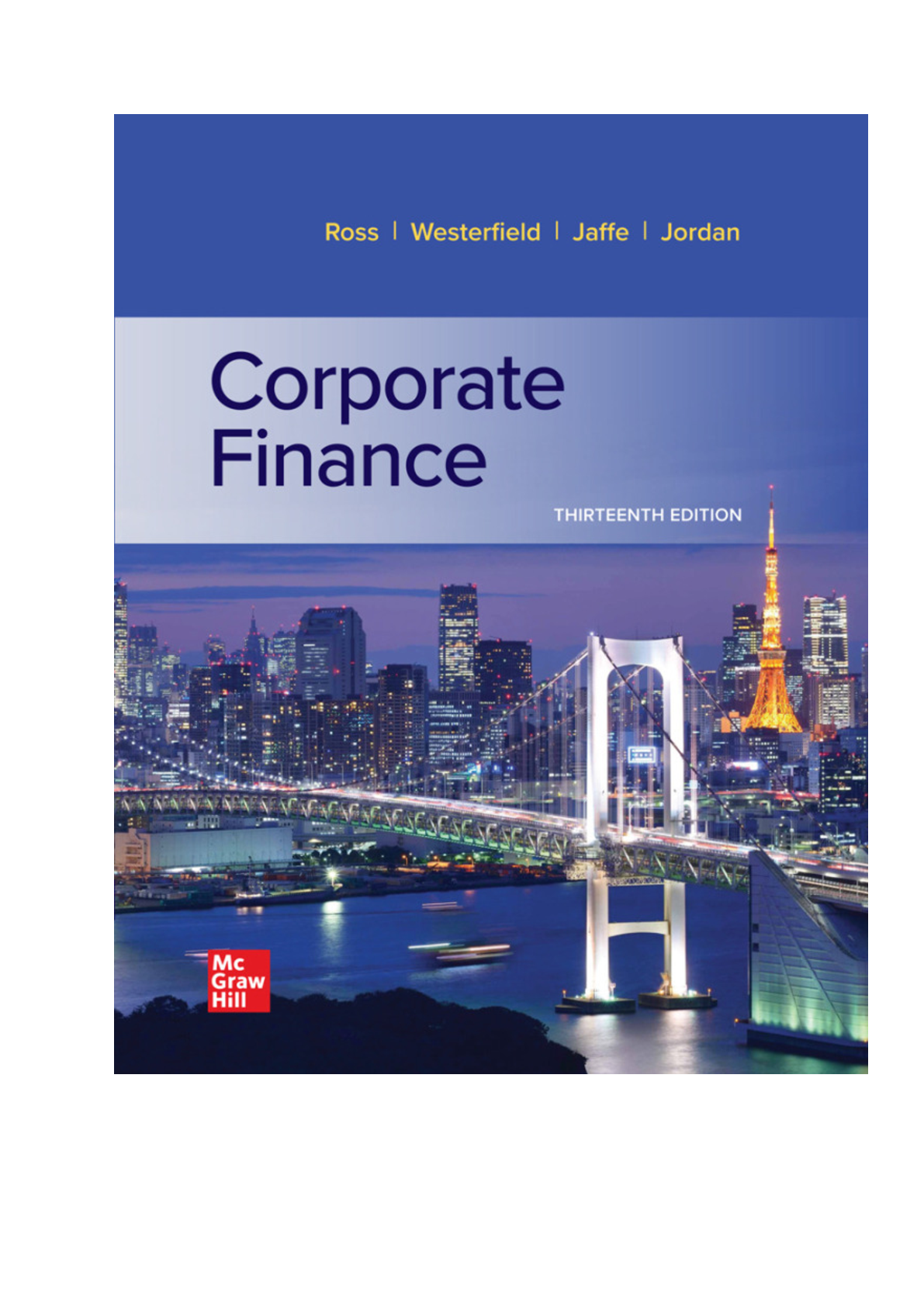


.png)
